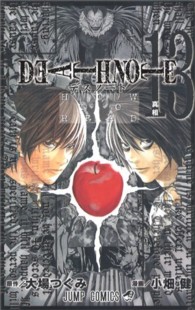Full Description
How can we explain metrical irregularities in Homeric phrases like ἀνδροτῆτα καὶ ἥβην? What do such phrases tell us about the antiquity of the epic tradition? And how did doublet forms such as τέτρατος beside τέταρτος originate?
In this book, you will find the first systematic and complete account of the syllabic liquids in Ancient Greek. It provides an up-to-date, comprehensive and innovative etymological treatment of material from all dialects, including Mycenaean. A new model of linguistic change in the epic tradition is used to tackle two hotly-debated problems: metrical irregularities in Homer (including muta cum liquida) and the double reflex. The proposed solution has important consequences for Greek dialect classification and the prehistory of Epic language and meter.
Contents
Acknowledgments
Preface
List of Tables
Abbreviations and Conventions
1 The Greek Reflexes of *r̥ and *l̥
Introduction
1.1 The Problem and Its Relevance
1.2 Environments with a Common Greek or Proto-Greek Reflex αρ, αλ
1.3 The o- and u-Colored Reflexes of *r̥ and *l̥ in the Environment *C_T
1.4 Previous Accounts of - versus - in Ionic-Attic
1.5 Accounting for *r̥ > -
1.6 Outlook
2 Mycenaean Reflexes of *r̥ and the Numeral 'Four'
Introduction
2.1 Preliminary Remarks on the Use of Personal Names
2.2 An a-Colored Reflex in Mycenaean?
2.3 Evidence for an o-Colored Reflex
2.4 o-Series versus a-Series Spellings
2.5 Explaining the Orthographic Variation between ⟨Co-⟩ and ⟨Co-ro-⟩
2.6 Ion.-Att. τέταρτος and an Early Simplification of *-tu̯- before *r̥
2.7 A New Account of Myc. qe-to-ro- and Ion.-Att. τετρα τέτρατος
2.8 Conclusions regarding Mycenaean
3 Reflexes of *r̥ in the Alphabetic Dialects
Introduction
3.1 The Alleged Cretan Liquid Metathesis
3.2 Other West Greek Dialects
3.3 The Aeolic Dialects
3.4 Arcado-Cyprian
3.5 Pamphylian
3.6 Conclusions
4 Reflexes of *r̥ and *l̥ in 'Caland' Formations
Introduction
4.1 The Root Vocalism of Caland Formations in Greek and PIE
4.2 Analogical Reshaping and Re-derivation
4.3 Reflexes of *r̥ and *l̥ in the u-Stem Adjectives
4.4 *βλαδύς versus ἀμαλδύνω
4.5 θρασύς versus θαρσύνω
4.6 Conclusions
5 Reflexes of *r̥ in καρτερός, κράτος and Related Forms
Introduction
5.1 Semantics and Etymology
5.2 The Allomorphy of κρατ- and καρτ- in Homer and Classical Greek
5.3 Conclusions concerning the Vocalization of *r̥
6 Reflexes of *r̥ and muta cum liquida in Epic Greek
Introduction
6.1 The Reflex - and the Metrical Behavior of κραδίη
6.2 Muta cum liquida Scansions in Homer
6.3 Wathelet's Proposal for the Origin of McL in Homer
6.4 Criticism of Wathelet's Scenario
6.5 Quantitative and Qualitative Evidence for McL in Homer
6.6 Avoidance of McL Scansion in Epic Greek
6.7 Epic *r̥: - Is the Regular Reflex of Artificially Retained *r̥
6.8 The Evidence for - from Epic *r̥
6.9 Less Certain Evidence for Epic *r̥
6.10 Nonce Formations with - in Epic Greek
6.11 Conclusions
7 Epic Forms with -
Introduction
7.1 The Dialectal Origin of Forms with -
7.2 -ρο- as a Conditioned Reflex of Epic *r̥
7.3 Other Forms with -
7.4 Conclusions
8 The Reflexes - and - in Aorist Stems
Introduction
8.1 The Evidence
8.2 The Regular Development *r̥ > - in the Thematic Aorist
8.3 The Pattern of Attestation of the Thematic Aorists with -
8.4 Epic *r̥ in the Thematic Aorist?
8.5 Pindaric δρακέντ-
8.6 Conclusions
9 Remaining Issues Concerning *r̥
Introduction
9.1 The Development of *-r̥s- in Ionic-Attic
9.2 Verbs with a Non-ablauting Root CraC-
9.3 An o-Colored Reflex in Attic?
9.4 The Development of *r̥n
9.5 Word-Final *-r̥
9.6 Further Potential Evidence for - -
10.5 The Development of *l̥n
10.6 Dialectal Evidence
10.7 Conclusions on *l̥
11 Relative Chronology
Introduction
11.1 The Vocalization of *r̥ as a late and dialectally different development
11.2 Dating the Vocalization of *r̥ in Ionic-Attic
11.3 Dating the Elimination of Epic *r̥
11.4 Relative Chronology: Other Sound Changes
11.5 Conclusions
12 Conclusion
Introduction
12.1 Philological Results and New Etymologies
12.2 Regular Reflexes of PGr. *r̥ in Dialects Other than Ionic and Attic
12.3 Special Reflexes of Proto-Greek *r̥
12.4 The Reflexes of Proto-Greek *l̥
12.5 The Double Reflex αρ versus ρα in Ionic-Attic
12.6 The Prehistory of the Epic Tradition
12.7 Relative Chronology and Subgrouping
Bibliography
Index






